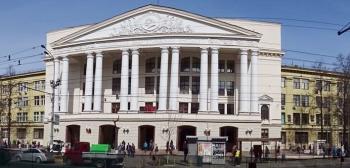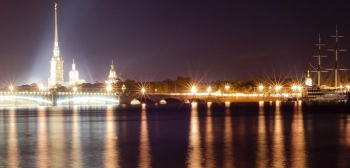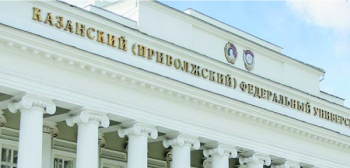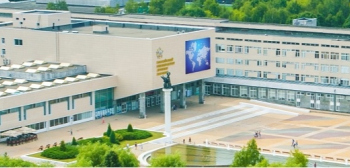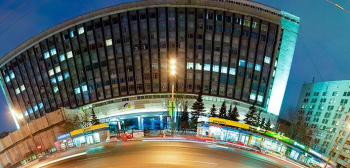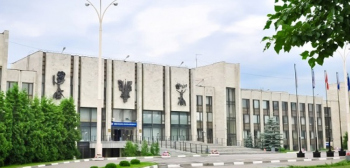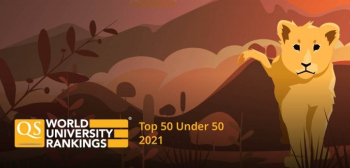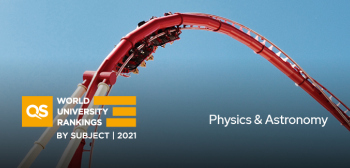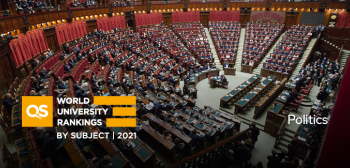- #=688 QS Global World Ranking
- PublicStatus
- Very HighResearch Output
- 9,891Total Students
- 1,768Faculty
- 3,064Int'l Students
The University’s position in the current QS World University Rankings.
Whether the University is funded by the government of that country or state, or funded by private donations.
The research intensity of the University, based on the number of papers output relative to the University’s size.
The number of full time equivalent students enrolled at the University.
The number of full time equivalent teaching staff employed by the University.
The number of full time equivalent international students enrolled at the University.
National Research Tomsk Polytechnic University
About
Our research is organized into four main interdisciplinary clusters and two supplementary areas of research. Core areas connect physics, electronics, nanotechnology, as well as mechanical, geological, and environmental engineering. Two supplementary clusters span telecommunications, software engineering, and social sciences.
Each cluster operates across several research units, including School of Earth Sciences & Engineering, School of Energy & Power Engineering, School of Nuclear Science & Engineering, School of Non-Destructive Testing, School of Non-Destructive Testing, School of...
Read more
Our research is organized into four main interdisciplinary clusters and two supplementary areas of research. Core areas connect physics, electronics, nanotechnology, as well as mechanical, geological, and environmental engineering. Two supplementary clusters span telecommunications, software engineering, and social sciences.
Each cluster operates across several research units, including School of Earth Sciences & Engineering, School of Energy & Power Engineering, School of Nuclear Science & Engineering, School of Non-Destructive Testing, School of Non-Destructive Testing, School of Advanced Manufacturing Technologies, School of Engineering Entrepreneurship, Research School of High-Energy Physics, Research School of Chemistry & Applied Biomedical Sciences, and School of Core Engineering Education. In total, we have 55 research labs working to create a tightly-knit ecosystem that promotes innovation and industry collaboration.
Our organizational structure is designed to serve our mission to be a leading academic research institution developing innovative solutions. We target both academia and industry in implementing our research effort.
Our infrastructure relies on strong linkages between research labs, centers, and departments, and we aim to promote culture of trust and collaboration. Our ultimate goal is to create synergies that facilitate interdisciplinary research and cooperation between various units glued together to serve one overarching goal.
Our school receives over 120 patents annually, and we rank second among Russian universities in a number of supported patents. Our full-time research and teaching faculty numbers 1,166 people, including active and corresponding members of state academies of sciences. Further, webring industry professionals as well as faculty from teaching and researchschools to enhance quality of instruction and classroom discussion. We promotegrowth of both research skills and industry expertise; our graduate studentscollaborate with top researchers in their chosen fields of study. We have builta collaborative ecosystem that aims to develop research talent with focus onnatural sciences, engineering, and mathematics.
About
Our research is organized into four main interdisciplinary clusters and two supplementary areas of research. Core areas connect physics, electronics, nanotechnology, as well as mechanical, geological, and environmental engineering. Two supplementary clusters span telecommunications, software engineering, and social sciences.
Each cluster operates across several research units, including School of Earth Sciences & Engineering, School of Energy & Power Engineering, School of Nuclear Science & Engineering, School of Non-Destructive Testing, School of Non-Destructive Testing, School of...
Read more
Our research is organized into four main interdisciplinary clusters and two supplementary areas of research. Core areas connect physics, electronics, nanotechnology, as well as mechanical, geological, and environmental engineering. Two supplementary clusters span telecommunications, software engineering, and social sciences.
Each cluster operates across several research units, including School of Earth Sciences & Engineering, School of Energy & Power Engineering, School of Nuclear Science & Engineering, School of Non-Destructive Testing, School of Non-Destructive Testing, School of Advanced Manufacturing Technologies, School of Engineering Entrepreneurship, Research School of High-Energy Physics, Research School of Chemistry & Applied Biomedical Sciences, and School of Core Engineering Education. In total, we have 55 research labs working to create a tightly-knit ecosystem that promotes innovation and industry collaboration.
Our organizational structure is designed to serve our mission to be a leading academic research institution developing innovative solutions. We target both academia and industry in implementing our research effort.
Our infrastructure relies on strong linkages between research labs, centers, and departments, and we aim to promote culture of trust and collaboration. Our ultimate goal is to create synergies that facilitate interdisciplinary research and cooperation between various units glued together to serve one overarching goal.
Our school receives over 120 patents annually, and we rank second among Russian universities in a number of supported patents. Our full-time research and teaching faculty numbers 1,166 people, including active and corresponding members of state academies of sciences. Further, webring industry professionals as well as faculty from teaching and researchschools to enhance quality of instruction and classroom discussion. We promotegrowth of both research skills and industry expertise; our graduate studentscollaborate with top researchers in their chosen fields of study. We have builta collaborative ecosystem that aims to develop research talent with focus onnatural sciences, engineering, and mathematics.
University highlights
- 2012#601+
- 2014#551-600
- 2015#501-550
- 2016#481-490
- 2017#=400
- 2018#=386
- 2019#=373
- 2020#=387
- 2021#=401
- 2022#=395
- 2023#=398
- 2024#=586
- 2025#=576
- 2026#=688
Similar Universities
National Research University Moscow Power Engineering Institute (MPEI)
National Research University Moscow Power Engineering Institute, Moscow
Peter the Great St. Petersburg Polytechnic University
Polytechnicheskaya Str. 29, Saint-Petersburg
=439 QS World University RankingsKazan (Volga region) Federal University
18 Kremlyovskaya st., Kazan
=392 QS World University RankingsSamara National Research University (Samara University)
34, Moskovskoe shosse St., Samara
4 QS starsSamara National Research University (Samara University)
34, Moskovskoe shosse St., Samara
4 QS starsThe National University of Science and Technology MISIS
Leninskiy Prospekt 4, NUST MISIS, Moscow
=451 QS World University RankingsRelated content
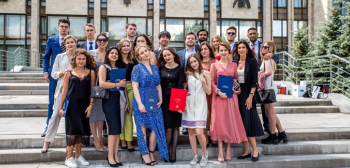
Why Russia is the Perfect St…
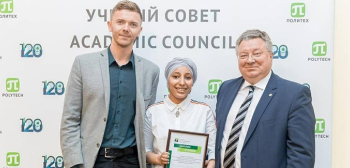
From Morocco to Russia: My S…

What Does Russia Have to Off…
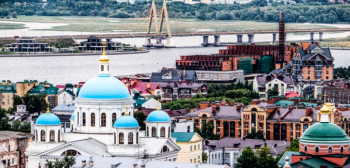
Study in Kazan
Test preparations
Featured University


-
10 UG & 47 PGTotal courses
-
Private for ProfitStatus
-
HighResearch output

